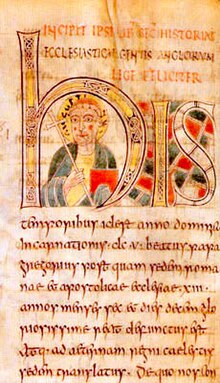
St Augustine of Canterbury was a Benedictine monk who became the first Archbishop of Canterbury in the year 597.
The Matins reading for the feast is as follows:
Augustine, a monk of the Lateran monastery in Rome, was sent by Gregory the Great in 597 to England with about forty monks as his companions. They were invited by King Ethelbert to Canterbury, the chief city of the kingdom, and they built an oratory nearby. Through preaching the doctrine of heaven, Augustine brought many of the islanders and the king himself to the Christian faith, to the great joy of the king's wife, Bertha, who was a Christian. By order of Pope Gregory, Augustine was ordained bishop and founded the see of Canterbury; by the same Pontiff he was granted the use of the pallium and the right to organize the hierarchy of England. At length, after suffering great hardships for Christ, having set Mellitus over the Church of London, Justus over that of Rochester, and Lawrence over his own Church, he made his journey to heaven on the 26th day of May. He was buried in the monastery of St. Peter, which then became the burial place of bishops of Canterbury and of several kings.He has traditionally been considered the "Apostle to the English" and a founder of the English Church. St Bede records in his history of the English Church that the monks converted the locals by their preaching and example:
"…they began to emulate the life of the apostles and the primitive Church. They were constantly at prayer; they fasted and kept vigils; they preached the word of life to whomsoever they could….Before long a number of heathen, admiring the simplicity of their holy lives and the comfort of their heavenly message, believed and were baptized..."St Augustine established schools and monasteries, and set about organising the missionary effort more broadly in England. His life was marked by miracles, and he was quickly acclaimed as a saint on his death.

